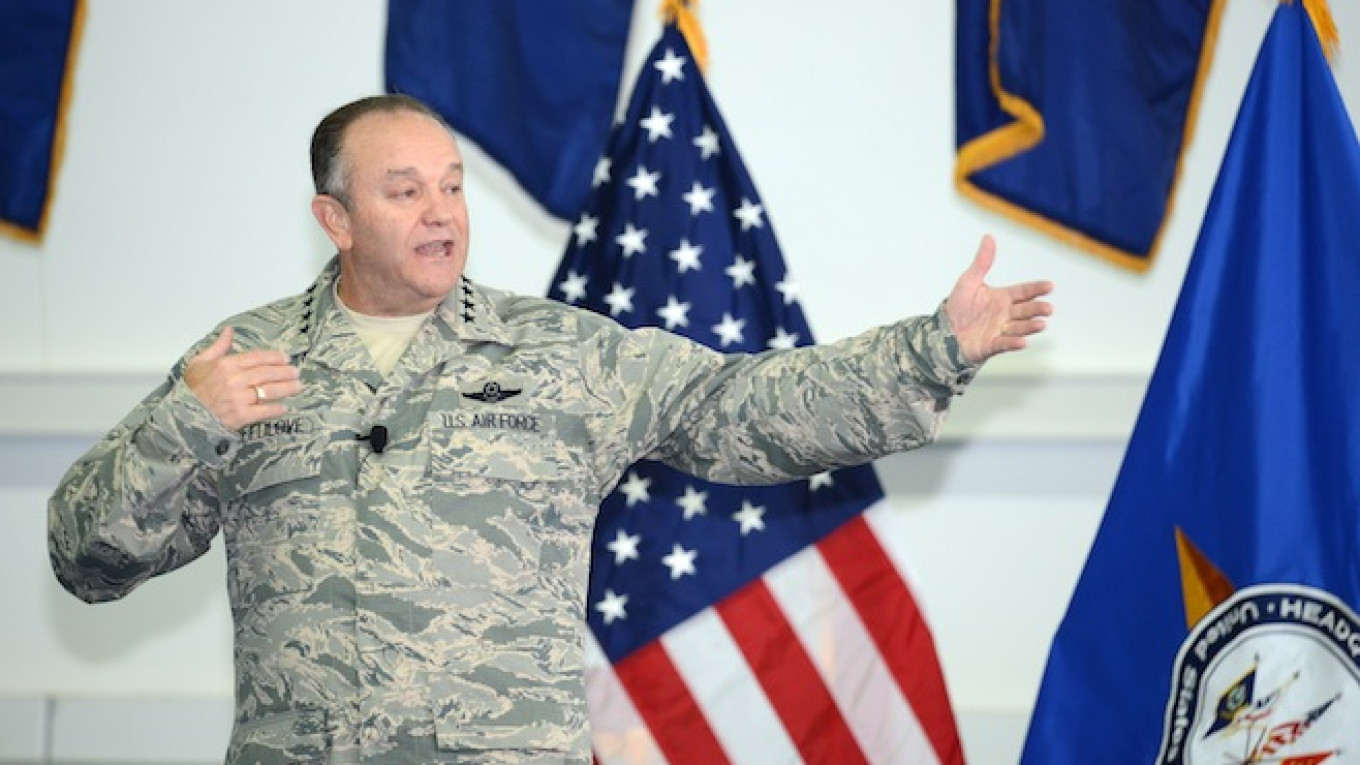The United States will boost its military presence in Eastern Europe early next year in an attempt to reassure allies that feel threatened by an “aggressive Russia,” the U.S. military said in a statement Wednesday.
The build-up will see the deployment of an additional armored army brigade on a rotational basis, bringing the total number of fully manned army brigades continuously present on the continent to three, the U.S. European Command said.
The increased rotation, which will begin next February, is a response to ?€?an aggressive Russia in Eastern Europe and elsewhere,?€? General Philip Breedlove, the top U.S. commander in Europe, said in a statement.
When the new armored brigade arrives on a nine-month rotation early next year, its troops, tanks and other military gear will be positioned along NATO's eastern borders — in Estonia, Latvia, Lithuania, Poland, Romania and Bulgaria ?€” to conduct exercises, the U.S. European Command said.
The Pentagon intends the plan as a demonstration of ?€?our strong and balanced approach to reassuring our NATO allies and partners,?€? Breedlove said.
?€?This means our allies and partners will see more capability ?€” they will see a more frequent presence of an armored brigade with more modernized equipment in their countries,?€? he said. A U.S. army brigade typically has about 4,500 troops.
The reinforcement arriving early next year will bring its own advanced military equipment. The older equipment that is currently used by U.S. forces in Europe will remain on the continent.
Gear that typically accompanies a full armored brigade comprises 12,000 pieces of equipment, including 250 tanks, Bradley Fighting Vehicles and self-propelled Howitzers, in addition to about 1,750 support vehicles, according to Department of Defense data.
Together with the troops and material already in Europe, ?€?there will be a division’s worth of stuff to fight if something happen,?€? U.S. Deputy Secretary of Defense Robert Work told The Wall Street Journal.
NATO allies near Russian borders have been voicing increasing concerns for their security ever since Moscow annexed Crimea from Ukraine in 2014. Russia's showcasing of its bomber planes and missile strikes in Syria, which began in September 2015, did little to assuage fears.
NATO allies in Europe have urged the Western defense alliance to boost its military presence in their countries.
Earlier this year, U.S. Defense Secretary Ash Carter unveiled the Pentagon's plans to quadruple funding for U.S. military operations in Europe next year ?€” bringing spending for European defense to $3.4 billion for the 2017 fiscal year.
The United States has about 62,000 military personnel and soldiers permanently stationed in Europe, and an additional 4,200 troops have been rotating since 2014.
At the height of the Cold War, the number U.S. forces stationed on the continent reached more than 500,000, according to military figures.
Contact the author at? [email protected]
A Message from The Moscow Times:
Dear readers,
We are facing unprecedented challenges. Russia's Prosecutor General's Office has designated The Moscow Times as an "undesirable" organization, criminalizing our work and putting our staff at risk of prosecution. This follows our earlier unjust labeling as a "foreign agent."
These actions are direct attempts to silence independent journalism in Russia. The authorities claim our work "discredits the decisions of the Russian leadership." We see things differently: we strive to provide accurate, unbiased reporting on Russia.
We, the journalists of The Moscow Times, refuse to be silenced. But to continue our work, we need your help.
Your support, no matter how small, makes a world of difference. If you can, please support us monthly starting from just $2. It's quick to set up, and every contribution makes a significant impact.
By supporting The Moscow Times, you're defending open, independent journalism in the face of repression. Thank you for standing with us.
Remind me later.


